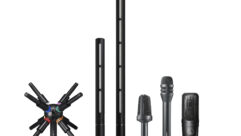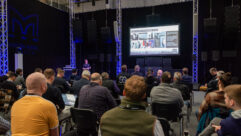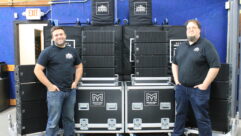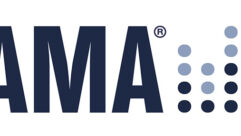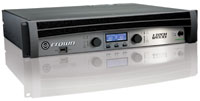

Audio Review: Crown Audio I-Tech I-T12000 HD
Jul 7, 2009 12:00 PM,
By John McJunkin
A small amplifier that delivers big power and great signal processing.

Amplifiers have become vastly more sophisticated over the years, and I would guess that amp designers from 50 years ago would probably faint if they could climb into a time machine and see what we have today. Recent years have seen the development of amplifiers with onboard digital signal processing and network communication capacity, and these sophisticated amps have become the rule, rather than the exception, in many applications. With Crown Audio’s introduction of the I-Tech HD series, I decided to take a look at the most powerful amp in this series, the I-T12000 HD.
The amp’s front panel features, from left to right, a USB data port and LEDs to indicate (for channel 1) amplifier fault, thermal shutdown, clipping, input or output level (signal present, -20dB, -10dB,) a “ready” LED, and a speed-sensitive rotary encoder controlling channel 1’s level. In the center of the front panel is the amp’s LCD control screen, which displays detailed information about the amplifier’s operation. Below the screen are three buttons: Menu/Exit, Prev, and Next, which are used to navigate through the system menus. To the right of the screen and navigation buttons is the rotary encoder used to control channel 2’s level, followed by a group of channel 2 LED indicators duplicating those associated with channel 1. Finally, the far right side of the front panel has a blue LED to indicate that the amplifier is on and AC power is available, a yellow LED to indicate network data activity, and another yellow LED to indicate bridge mode operation. The top half of the front panel is devoted to cooling vents.
The rear panel of the I-T12000 HD features, from left to right, a three-prong power inlet, a cooling fan, power switch, and an input section. In the upper half of the midsection are the amp’s two balanced XLR analog inputs, along with balanced XLR loop-through outputs. Below the analog inputs is an AES/EBU input and loop-through pair, alongside an EtherCon Ethernet connector for network operation. On each side of the EtherCon connector is an LED, indicating network link/activity and CobraNet node status, respectively. To the immediate left of the AES/EBU input are an LED indicating preset and data status and a reset button that returns the amp to factory defaults. The amp’s unique MAC address is printed below these indicators. To the immediate right of the input section are the amp’s outputs, leading off with a pair of 4-pole Speakon connectors and followed by binding post outputs, which can connect banana plugs, wire, or spade lugs. Finally, on the far right of the amp’s rear panel is a second cooling fan.
The I-T12000 HD that I evaluated lists power ratings as follows: 2Ω dual, 3750W per channel; 4Ω dual, 4500W per channel; 8Ω dual, 2100W per channel; 4Ω bridge, 7500W; and 8Ω bridge, 9000W. Crown states in its specifications that these numbers represent guaranteed minimum power in watts at 20Hz to 20kHz with less than 0.1 percent THD. This is a very healthy dose of power—sometimes I still find myself shocked at the power output available in 2RU amplifiers these days. Aside from the solid and clean power output, this amplifier also offers a pretty substantial suite of available DSP—including 24-bit/192kHz Cirrus Logic A/D and D/A converters and infinite impulse response (IIR) and linear-phase finite impulse response (FIR) filters. Internally, the DSP math is handled with 32-bit, floating-point precision. The CPU’s high-speed capacity indeed facilitates FIR filtering, arriving at vastly less phase incoherency.
The front-panel controls allow attenuation and muting, analog input sensitivity, choice of presets (set up in advance for specific loudspeaker combinations), and choice between dual and bridge mono mode. More advanced DSP operations include the limiting of attenuation amounts (i.e. maximum amount of attenuation that a user can apply), attenuator linking, and choice of inputs with some pretty clever options. Digital and analog inputs can be simultaneously connected, and the digital inputs can be backed up or overridden by analog automatically. The user can also establish maximum analog input at either +21dBu or +15dBu.
Audio Review: Crown Audio I-Tech I-T12000 HD
Jul 7, 2009 12:00 PM,
By John McJunkin
A small amplifier that delivers big power and great signal processing.

One DSP operation that’s not facilitated from the front panel is selection of sample rate. That’s because the FIR filter settings need to be recalculated if the sample rate is changed. Luckily, this is easily accomplished by using System Architect software. I would guess that most contractors are familiar with Harman’s application, and in this case, it grants control over pretty much every parameter of the amp—including input level, muting, channel linking, signal routing, sample rate, CobraNet settings, compression, delay, 16-band fully parametric equalization, crossover filtering, and Crown’s proprietary LevelMax suite of limiters that are intended to prevent catastrophes.
The software also remotely displays information about all the aforementioned controls, along with input and output levels, temperature information, limiting, load impedance, ready status, front-panel security information, and error reporting on thermal, clipping, line voltage, fan status, and continuous load monitoring. The fan monitoring features true tachometer information. The software also allows the user to copy and paste one amp’s parameters to another, and all the amp’s presets and its handy signal generator are managed by the software, as well. Frankly, I can’t think of many good reasons not to take the necessary steps to put your amp(s) under computer control. The System Architect software was developed with customer feedback in mind, and I appreciate this attention to the requirements of users.
Related Links

Technology Showcase: Remote-controlled and Networked Power Amplifiers
With the coming of digital audio networks and new protocols augmenting existing serial control technologies, the world of power amplifier control and monitoring has become an increasingly exciting and innovative realm…

The Buzz: Installation Spotlight: Flipping the Switch
Exhibiting bravado in the face of an economic downturn as only casino mogul Steve Wynn can, the new Encore Las Vegas hotel and casino opened its doors in December 2008 next to the famed Wynn Las Vegas Resort and Country Club…

This April, as a unique event in baseball history, a city’s two franchises both took up residence in new stadiums in the same season…
The I-Tech series amplifiers feature a global power supply with Crown’s proprietary Power Factor Correction (PFC). Adapters enable the amps to be powered virtually anywhere in the world, with AC ranging from 100V to 240V and at both 50Hz and 60Hz. The amps feature a high degree of common-mode rejection and nicely minimize hum and other RF issues. The interface is friendly and easily navigated, particularly if a computer is used to control these amplifiers with System Architect software. These amps sound great—with minimal harmonic and intermodulation distortion—due to the high-quality, high-resolution DSP—in particular, the FIR filtering, which virtually eliminates the phase distortion of IIR filtering. The front-panel USB slot nicely facilitates transferring presets with a jump drive. This is also the only amplifier with analog, AES/EBU, CobraNet, HiQnet, and Ethernet connectivity, and this makes it versatile when integrating it into existing infrastructure.
Amplifier technology continues to advance, and these amps represent the fifth generation of Class I design. This topology facilitates a lot of power from a small box. Crown has married this amplifier technology with some powerful DSP and control infrastructure and arrived at a truly excellent product.
John McJunkin is principal of Avalon Podcasting in Chandler, Ariz. He has consulted in the development of studios and installations, and he provides high-quality podcast-production services.
PRODUCT SUMMARY
- Company: Crown Audio
www.crownaudio.com - Product: I-T12000 HD
- Pros: Powerful amp coupled with excellent DSP and control.
- Cons: None to speak of.
- Applications: Any application that requires a networkable power amp.
- Price: $8,510
SPECIFICATIONS
- Input sensitivity: 1.28V-8V (in 0.1Vincrements)
- Frequency response: 20Hz-20kHz ±0.25dB
- Signal-to-noise ratio: >108dB
- THD: <0.1%
- IMD: <0.35%
- Latency: 1.16ms @ 48kHz, 529µs @ 96kHz
- Damping factor: >5000
- Crosstalk: >80dB
- CMR: >55dB, typically >70dB
- DC output offset: <±3mV
- Input impedance: 20kΩ balanced, 10kΩ balanced
- Load Impedance (dual): 1-2-4-8-16Ω
- Load impedance (bridged mono): 2-4-8Ω
- Dimensions: 19”x3.5”x16.2”
- Weight: 28lbs.



